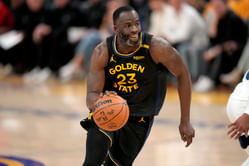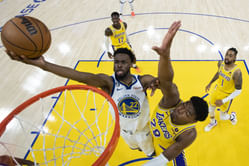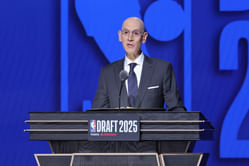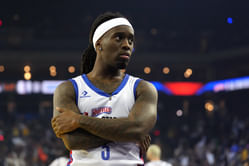
In the NBA, a foul generally occurs whenever there is a non-compliance with the rules. The NBA has different types of fouls depending on which rule has been infringed. For the most part, fouls occur in a basketball game when there is physical contact from one player with another. However, the list of fouls and violations in the NBA is quite an extensive one.
Every player playing the game has a maximum of six fouls that they can commit throughout the game. Once they have committed their sixth foul, they can no longer play any part in the remainder of the game.
Fouls in the NBA can result in one or more of the following penalties:
The team whose player has committed the foul loses possession of the ball.
The player who is fouled can get to shoot one or two free throws, depending on the situation.
If any player commits six fouls, then he fouls out of the game.
The player who has committed the foul may even be suspended from upcoming games.
While fouls are part and parcel of the game, each foul depends on how it takes place and on the consequences of the foul. Intentional fouls resulting in serious contact are typical examples of bad sportsmanship and are more heavily punished than the normal fouls which take place as part of the game. (via NBA's official website)
Also Read: How many fouls to foul out in NBA?
Types of fouls in the NBA
Personal Fouls
This is the most common type of foul that takes place during a game. Personal fouls occur when there is contact between two players. While it is not possible to avoid complete contact, and there is some amount of leeway provided to the players, a significant contact will result in a personal foul being called.
Most of the time, personal fouls are called on the defending team, but at times, the player with the ball can also be penalized. This is called an offensive foul. If a foul occurs when neither team has clear possession of the ball, then it is known as a loose-ball foul.
Flagrant Fouls
Flagrant fouls are those fouls which are more violent in nature. Flagrant fouls are handed out to players when the officials believe that a direct play on the ball was not made and the intention of the player was to stop the opposition player rather than the ball.
There are two types of flagrant fouls — one and two. If a player receives a flagrant one type of foul, then it is an unnecessary contact. However, if the same player receives two such fouls, then he is automatically ejected from the game. The opposition team is given two free throws as well as possession of the ball.
Technical Fouls
Technical fouls are those fouls which are not involve physical contact. Technical fouls can be handed to players, coaches, or even teams. These fouls can occur due to various reasons such as unsportsmanlike conduct, delay of game, calling a timeout after all allotted timeouts are used, breaking the backboard while dunking, having too many players on the court, and more.
Also Read: Most Points Scored in a Player in Single NBA Game
List of NBA fouls
The following is the list of fouls in the NBA:
Technical Fouls:
Excessive Timeouts
Delay-of-Game
Number of Players
Hanging on the basket.
Conduct
Fighting Fouls
Fines
Personal Fouls:
By Dribbler
By Screening
Flagrant Foul
Free Throw Penalty Situations
Offensive Fouls
Loose Ball Fouls
Away-From-The-Play Foul
- Double Fouls
- Punching Fouls
FAQs on Fouls in the NBA
A. In the NBA, a player fouls out of the game after six personal fouls.
A. A flagrant two type of foul results in an automatic ejection of a player from the game.
A. In the NBA, the maximum number of defensive fouls in a quarter is set at five which is the fouls bonus. After five fouls, the opposition team will get to shoot two free throws for every subsequent foul.
A. A flagrant foul results in two free throws for the opposition team.
A. Technical fouls can be awarded to players, coaches, or even a team in the NBA.









